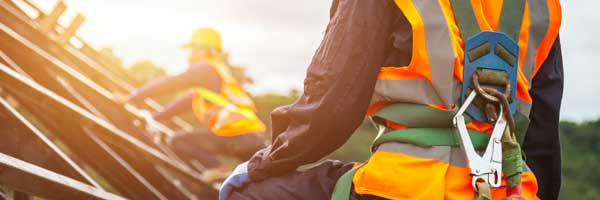
If you’re in the construction industry, construction safety should be top-of-mind for your business. Construction workers face many serious hazards such as falls, equipment failure and exposure to hazardous materials (just to name a few). Protecting your employees and business is extremely important. By developing a risk management plan, business owners can help foresee risks, implement safety practices, estimate outcomes and more.
Today, we will talk about risk management, why it’s important and how to start your own construction risk management plan.
What is risk management in the construction industry?
Risk management is about identifying and solving potential risks in your operations before they happen to prevent problems. A properly crafted risk management plan outlines specific steps you can take to avoid safety and business interruption risks.
Some potential construction safety risks are:
- Falls
- Hazardous materials, such as asbestos, silica and others
- Burns and electrical incidents
- Noise exposure
- Equipment failure
- Fire and property damage
Why is risk management important?
According to the Bureau of Labor Statistics, there were 5,486 recorded fatal work injuries in 2022, a 5.7-percent increase from 5,190 in 2021. As risks continue to increase, it’s important to be proactive in protecting your workers, clients and your company.
There are many benefits to creating a construction risk management plan:
- Increase safety and wellbeing of workers
- Improve company reputation
- Avoid costs associated with workplace accidents
- Prevent damage to machinery, property and materials

Learn about our
Business Insurance
How should you create a risk management plan?
An effective risk management plan provides detailed steps to address the risks in your operations, while being easy to follow. Follow these steps to developing a construction risk management and fire prevention plan:
-
Risk assessment
Identify potential risks and the impact they could have on your business. Evaluate each aspect of the construction risks thoroughly to ensure nothing is overlooked.
-
Strategy development
Develop strategies to address and manage the risks you’ve identified during risk assessment. OSHA offers many resources to help you get started.
-
Implementation
Once you’ve developed a strategy, communicate the plan with your employees. Promoting a safety-focused culture, providing training and the proper tools for employees is key to the success of your risk management plan.
-
Evaluation
Review your Construction Risk Management plan often and revise as needed. Make sure to account for all potential risks and meet current safety best practices.
-
Assign responsibility and authority
Clearly assign and spell out the responsibility for site fire prevention before the start of the project. All contractors and subcontractors should be aware of this responsibility and authority assignment and procedures should be established for handling imminent danger-type hazards.
The perks of risk control services
Some insurance companies offer their commercial policyholders free access to risk control services to help perform risk assessments and develop solutions.
Some risk control services you may see include:
- Assistance in developing a workplace safety program
- Risk management consultation for business and operation risk assessments
- Driver safety training, such as defensive driving, HazMat transportation, driver and DOT compliance
- Workplace safety training, such as an OSHA course, forklift training, sprinkler system and water supply evaluation
- Business continuity planning
If you’re interested in Grange risk control services, visit our page for the complete list of construction and business insurance risk control consultation services.
Providing a safe workplace for your employees is essential to your business’s success. Connect with a Grange independent agent to learn more about Grange commercial insurance and the risk control services available for your construction company.
References
Bureau of Labor Statistics
Grange Risk Control Services
Coverages described herein may not be available in all states. Please contact a local independent Grange agent for complete details on coverages and discounts. If the policy coverage descriptions herein conflict with the language in the policy, the language in the policy applies. The material provided above is for informational, educational, or suggestion purposes and does not imply coverage. WE RESERVE THE RIGHT TO REFUSE TO QUOTE ANY INDIVIDUAL PREMIUM RATE FOR THE INSURANCE HEREIN ADVERTISED. Grange Insurance policies are underwritten by Grange Insurance Company, Trustgard Insurance Company, Grange Indemnity Insurance Company, Grange Insurance Company of Michigan and Grange Property & Casualty Insurance Company*. Not all companies are licensed in all states. *Not licensed in Pennsylvania.